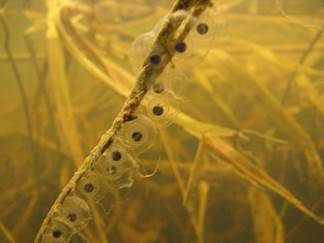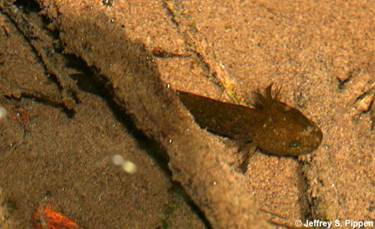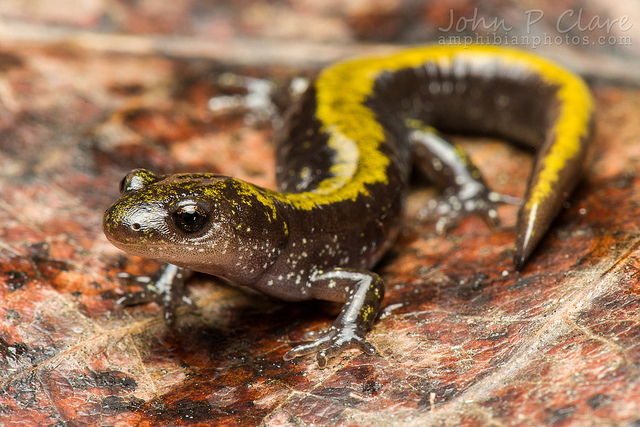The men on the expedition felt overwhelmed by their most ancient memories in that paradise of dampness and silence, going back to before original sin, as their boots sank into pools of steaming oil and their machetes destroyed bloody lilies and golden salamanders. – One Hundred Years of Solitude, Gabriel Garcia Marquez
This is a common and widespread salamander found in the Oregon, Washington, Idaho, and NW Montana. It is the smallest of the Ambystoma genus – or mole salamanders, which spent the greater parts of their life underground and come out during the wet season for brief mating periods in ponds. They have thick bodies, coastal groves along the sides, and thick legs. Adult long-toed salamanders are dark gray to almost black with an uneven yellow, tan, or olive-green dorsal stripe. The sides have a white speckling. They have four front toes and five on the back, with the outer fourth toe on the back foot noticeably longer than the other toes – hence its name.
It is quite versatile and can be found in a wider range of habitats than any other salamander in the Northwest – semiarid sagebrush, dry woodlands, humid forests, alpine meadows and most places in-between – at elevations from sea level up to about 3,000 ft. It is a good example of a habitat-generalist, compared to habitat-specialists that are only found in a narrow range of conditions.
They are rarely found outside of the breeding season when they lead a subterranean live during the warmer and dryer seasons. In the spring you can find them most easily at night in ponds and lakes, sometimes at quite high densities. Because it inhabits a wide range of habitats it displays a range of timing for breeding to match local conditions. In mild coastal climates, such as the Willamette Valley, adults may migrate to breeding ponds as early as October and the breeding season may last until April. Conversely, in colder areas breeding may not start until February, but generally it is the first amphibian to breed in the spring in the NW. Ambystoma – cup-mouthed, and macro- (large, long); dactylum (toe).
Males arrive first at the breeding ponds and stay longer than the females. Courtship involves pushing and head rubbing – the males release a pheromone from their chin gland – and eventually the male will clasp the female from above. The male will release the female and then deposits up to 15 spermatophores – a small, gooey topped with a sperm packet – to the ground surface. The female will follow the path and pick up the packets with her cloaca. Eggs are deposited on pond vegetation singularly or in clusters.

The eggs hatch in two to four weeks, depending on the water temperature. The larvae will metamphose into terrestrial adults in about 60 days, but in high elevation, permanent lakes this may take up to 14 months.

The larvae eat a variety of zooplankton, immature insects, aquatic snails and may be cannibalistic if the opportunity arises. The terrestrial form eats spiders, crickets, earthworms, flies, snails, slugs, and other invertebrates. Garter snakes and bullfrogs are known to prey on long-toed salamanders. When threatened they will wag their tail around and secrete a white, sticky, and noxious substance. It is thought that their contrasting color serves as a warning of this toxic capability. I’ve handled numerous individuals and I’ve not experienced this behavior.
In addition – long-toed salamanders will exhibit autotomy, the ability to drop off part of their tail, which acts as a distraction to predators. The tail grows back, which is of interest to the medical profession.
I was conducting some stream/wetland surveys in an area of older forest in the Cascade foothills one January when we came upon a mosaic of shallow, temporary ponds scattered among the older western red cedar forest. There were patches of snow around and a quarter inch of ice on the ponds. To our amazement there were dozens of long-toed salamanders moving along under the ice, getting ready to mate. Heck, we were cold – it’s amazing that these small amphibians were able to not only function, but left their warm underground homes to crawl across the snow and frozen ground and then scurry under the ice for the spring mating season.
